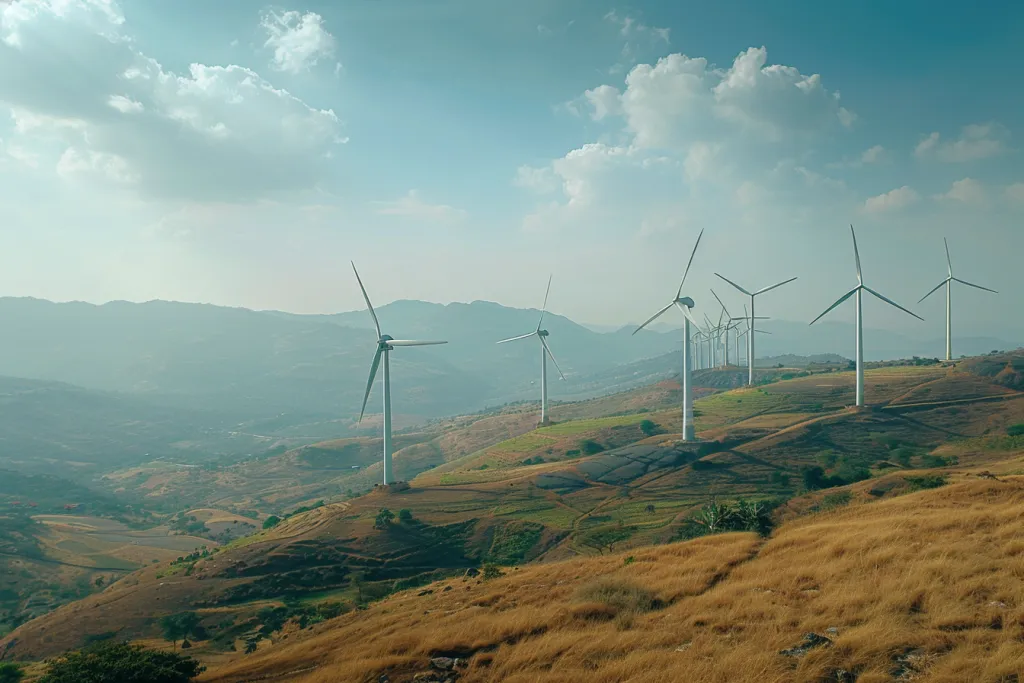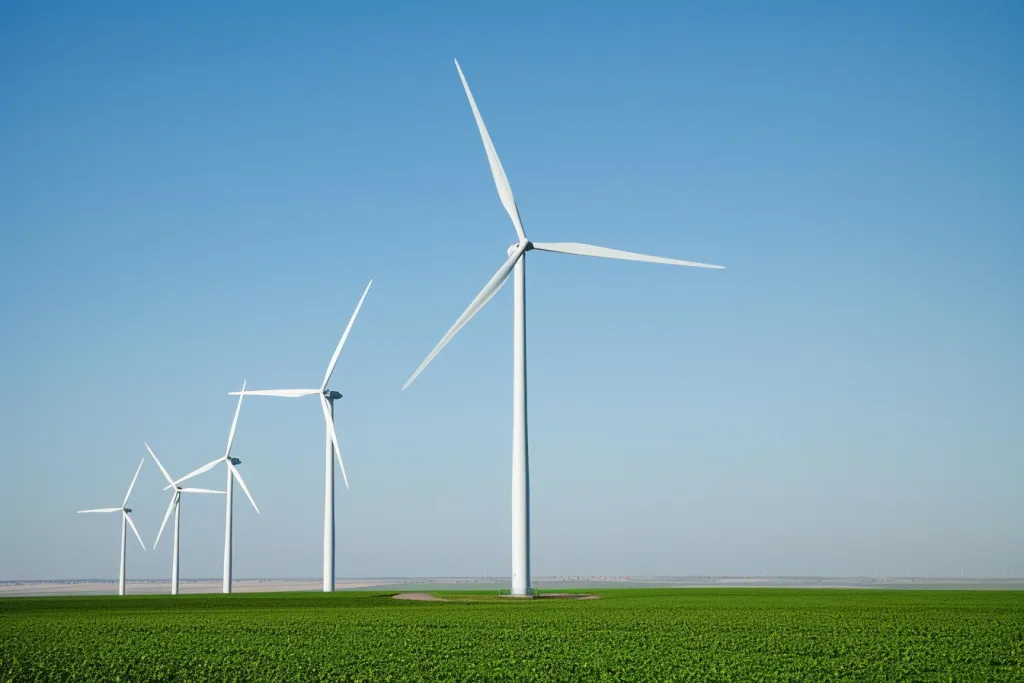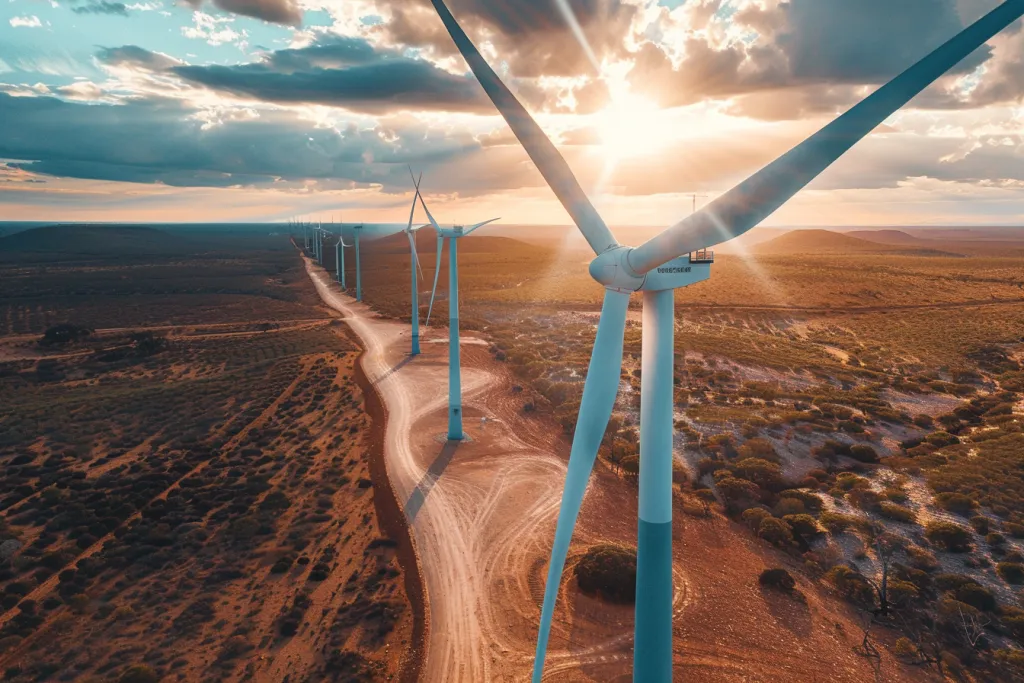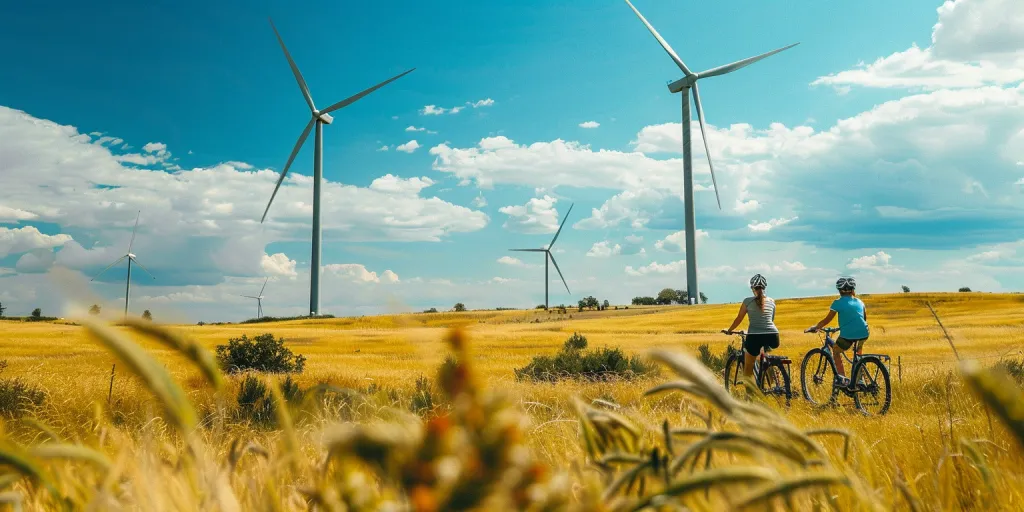The quest for sustainable energy solutions has led humanity to harness the power of the wind, a resource as ancient as the Earth itself. Electricity produced by wind is not just a testament to human ingenuity but also a beacon of hope for a cleaner, more sustainable future. This article delves into the intricacies of wind-generated electricity, exploring its mechanisms, environmental impact, technological advancements, economic implications, and future potential. Join us as we embark on a journey through the gusts and breezes that power our world.
Table of Contents:
– How wind energy is converted into electricity
– Environmental benefits of wind-generated electricity
– Technological advancements in wind energy
– Economic implications of wind power
– The future of wind-generated electricity
How wind energy is converted into electricity

Wind energy conversion is a marvel of modern engineering, involving the transformation of kinetic energy from wind into electrical power. At the heart of this process are wind turbines, towering structures with blades that rotate when caught by the wind. This rotation drives a generator inside the turbine, producing electricity. The efficiency of these turbines has significantly improved over the years, thanks to advancements in materials science and aerodynamic design, allowing for higher energy output even at lower wind speeds.
The scale of wind energy conversion can vary from small, individual turbines powering a single home to vast wind farms generating electricity for entire regions. The placement of these turbines is critical, with sites chosen based on consistent wind patterns and minimal environmental disruption. Offshore wind farms, in particular, have gained popularity due to the stronger and more consistent winds found at sea compared to those on land.
One of the most fascinating aspects of wind energy is its integration into the power grid. Wind energy, being intermittent by nature, requires sophisticated grid management and storage solutions to ensure a steady supply of electricity. Innovations in battery storage and grid technology have made it increasingly feasible to balance supply and demand, paving the way for a future where wind can supply a significant portion of our energy needs.
Environmental benefits of wind-generated electricity

The environmental advantages of electricity produced by wind are manifold, offering a compelling case for its adoption. Firstly, wind energy is clean, producing no harmful emissions or pollutants during operation. This starkly contrasts with fossil fuel-based power generation, which is a major contributor to air pollution and greenhouse gas emissions. By displacing fossil fuels, wind energy can significantly reduce our carbon footprint and combat climate change.
Furthermore, wind energy consumes no water during its generation, making it an exceptionally sustainable option in water-scarce regions. Traditional power plants, on the other hand, require vast amounts of water for cooling and other processes, leading to substantial water withdrawal from natural sources. Wind energy’s minimal water use further underscores its role in preserving vital water resources.
Another often overlooked benefit is the reduced impact on wildlife and ecosystems. While concerns have been raised about bird and bat collisions with turbine blades, the wind industry has made strides in mitigating these impacts through better turbine design and placement. Compared to the extensive habitat destruction and pollution associated with mining and drilling for fossil fuels, the footprint of wind turbines is significantly lighter on the planet.
Technological advancements in wind energy

The field of wind energy is ripe with innovation, driving forward the efficiency and viability of wind power. One of the most significant advancements is in turbine technology, with newer models featuring larger blades and taller towers capable of capturing more wind energy. These turbines can generate electricity even in areas with lower wind speeds, expanding the potential locations for wind farms.
Material science has also played a crucial role in the evolution of wind turbines. Modern blades are made from advanced composites that are lighter, stronger, and more durable, enhancing their performance and lifespan. This not only improves the economics of wind energy projects but also reduces the need for frequent replacements and maintenance.
Digitalization and smart technology are transforming how wind farms operate. Sensors and predictive analytics allow for real-time monitoring and management of turbines, maximizing their efficiency and reducing downtime. Furthermore, artificial intelligence and machine learning are being employed to optimize wind farm layouts and predict wind patterns, ensuring that each turbine is ideally positioned to capture maximum wind energy.
Economic implications of wind power

The economic landscape of wind power is characterized by rapidly falling costs and growing investment. The cost of wind energy has decreased dramatically over the past decade, making it one of the most competitive sources of renewable energy available today. This cost reduction is attributed to technological improvements, economies of scale, and increased experience in wind farm development and operation.
Wind energy also plays a significant role in job creation, with the sector employing hundreds of thousands of people worldwide in manufacturing, installation, maintenance, and other roles. These jobs not only contribute to economic growth but also support community development, especially in rural areas where wind farms are often located.
However, the economic success of wind energy is not without challenges. The intermittent nature of wind requires investment in storage and grid infrastructure to ensure reliability. Additionally, the upfront costs of wind projects, though decreasing, can still be substantial. Despite these challenges, the long-term economic benefits of wind energy, including energy security, price stability, and environmental sustainability, make it a wise investment for the future.
The future of wind-generated electricity

The horizon looks promising for wind-generated electricity, with innovations and policies driving its growth and integration into our energy mix. The global push for carbon neutrality has positioned wind energy as a key player in achieving ambitious climate goals. As technology advances and costs continue to decline, wind power is set to expand its reach, potentially becoming a dominant source of electricity worldwide.
Emerging trends, such as floating wind turbines, open up new possibilities for offshore wind farms in deeper waters, vastly increasing the potential for wind energy generation. Additionally, the integration of wind power with other renewable sources and energy storage solutions is paving the way for a fully renewable and reliable energy system.
The journey towards widespread adoption of wind-generated electricity is not without hurdles. Issues such as land use, community acceptance, and wildlife impact require careful consideration and management. However, with continued innovation, policy support, and public engagement, wind energy holds the promise of powering a sustainable future for all.
Conclusion:
Electricity produced by wind stands at the forefront of the renewable energy revolution, offering a clean, sustainable, and increasingly economical solution to our energy needs. As we navigate the complexities of climate change and energy security, wind energy emerges as a pivotal force for good. Embracing the power of the wind not only propels us towards a greener future but also unites us in our shared commitment to the planet and each other.




